第51章 MONEY OR SIMPLE CIRCULATION(32)
All the distinct forms evolved by gold as money are merely manifestations of aspects latent in the metamorphosis of commodities,but these aspects did not assume a separate form in the simple circulation of money,in money as it appears as coin and the circuit C --M --C as a dynamic unity,or else they emerged merely as potentialities,as did for example the interruption of the metamorphosis of commodities.We have seen that in the course of the transaction C --M the commodity as a real use-value and nominal exchange-value is brought into relation with money as a real exchange-value and only nominal use-value.By alienating the commodity as use-value the seller realises its exchange-value and the use-value of money.In contrast,by alienating money as exchange-value,the buyer realises its use-value and the price of the commodity.Commodity and money,accordingly,change places.The active process of this bilateral polar antithesis is in its turn separated while it is being carried through.The seller actually alienates the commodity but realises its price in the first place only nominally.He has sold the commodity at its price,but the price will only be realised at a predetermined later date.The buyer buys as the representative of future money,whereas the seller sells as the owner of a commodity available here and now.On the one hand,the seller actually hands over the commodity as use-value without actually realising its price;on the other hand,the buyer actually realises his money in the use-value of the commodity without actually handing over the money as exchange-value.Just as formerly money was represented by a token of value,so now it is symbolically represented by the buyer himself.Just as formerly the value-token as a universal symbol entailed a State guarantee and a legal rate,so now the buyer as a personal symbol gives rise to private,legally enforcible,contracts among commodity-owners.
Conversely,in the transaction M --C,money as a real means of purchase may be alienated,thus realising the price of the commodity before the use-value of the money is realised,or before the commodity is handed over.
This happens,for instance,in the well-known form of advance payment;also in the form of payment used by the English government to buy opium from Indian ryots,and is largely used by foreign merchants living in Russia to buy goods produced in that country.In these cases,however,money functions only in the familiar form of means of purchase and therefore requires no new definition,[1]or any further discussion.With regard to the changed form which the two transactions M --C and C --M assume here,we shall only note that the purely conceptual distinction of purchase and sale as it appears directly in circulation becomes now a real distinction,since there is only money in one case and only commodity in the other;in each of them,however,only the extreme is actually available from which the initiative comes.
Both forms,moreover,have in common the fact that in each of them one equivalent exists only by common decision of buyer and seller,a decision which is mutually binding and is given a distinct legal form.
Seller and buyer become creditor and debtor.Whereas the commodity-owner as the guardian of a hoard was a rather comical figure,he now becomes terrifying,because he regards,not himself,but his neighbour as the embodiment of a definite sum of money,and turns his neighbour and not himself into a martyr to exchange-value.The former believer becomes a creditor [In German a pun on the words "der Gläubige",the believer,and "der Gläubiger",the creditor.--Ed ]and turns from religion to Jurisprudence.
"I stay here on my bond!"
In the changed form of C --M,in which the commodity is actually on hand and the money is merely represented,money functions first as the measure of value.The exchange-value of the commodity is assessed in money as its measure,but the exchange-value assessed by contract,that is the price,exists not merely in the mind of the seller,but is also the measure of the liabilities of the buyer.Secondly,money functions here as means of purchase,although it is merely its future existence which casts its shadow before it,for it causes the commodity to move from the hands of the seller into those of the buyer.On the settlement day of the contract,money enters circulation,for it moves from the hands of the former buyer into those of the former seller.But it does not come into the sphere of circulation as means of circulation or means of purchase.It fulfilled these functions before it existed,and it appears on the scene after ceasing to perform these functions.It enters circulation as the only adequate equivalent of the commodity,as the absolute embodiment of exchange-value,as the last word of the exchange process,in short as money,and moreover as money functioning as the universal means of payment .Money functioning as means of payment appears to be the absolute commodity,but it remains within the sphere of circulation,not outside it as with the hoard.The difference between means of purchase and means of payment becomes very conspicuous,and unpleasantly so,at times of commercial crises.[2]
The conversion of products into money in the sphere of circulation appears originally simply as an individual necessity for the commodity-owner when his own product does not constitute use-value for himself,but has still to become a use-value through alienation.In order to make payment on the contractual settlement day,however,he must already have sold commodities.